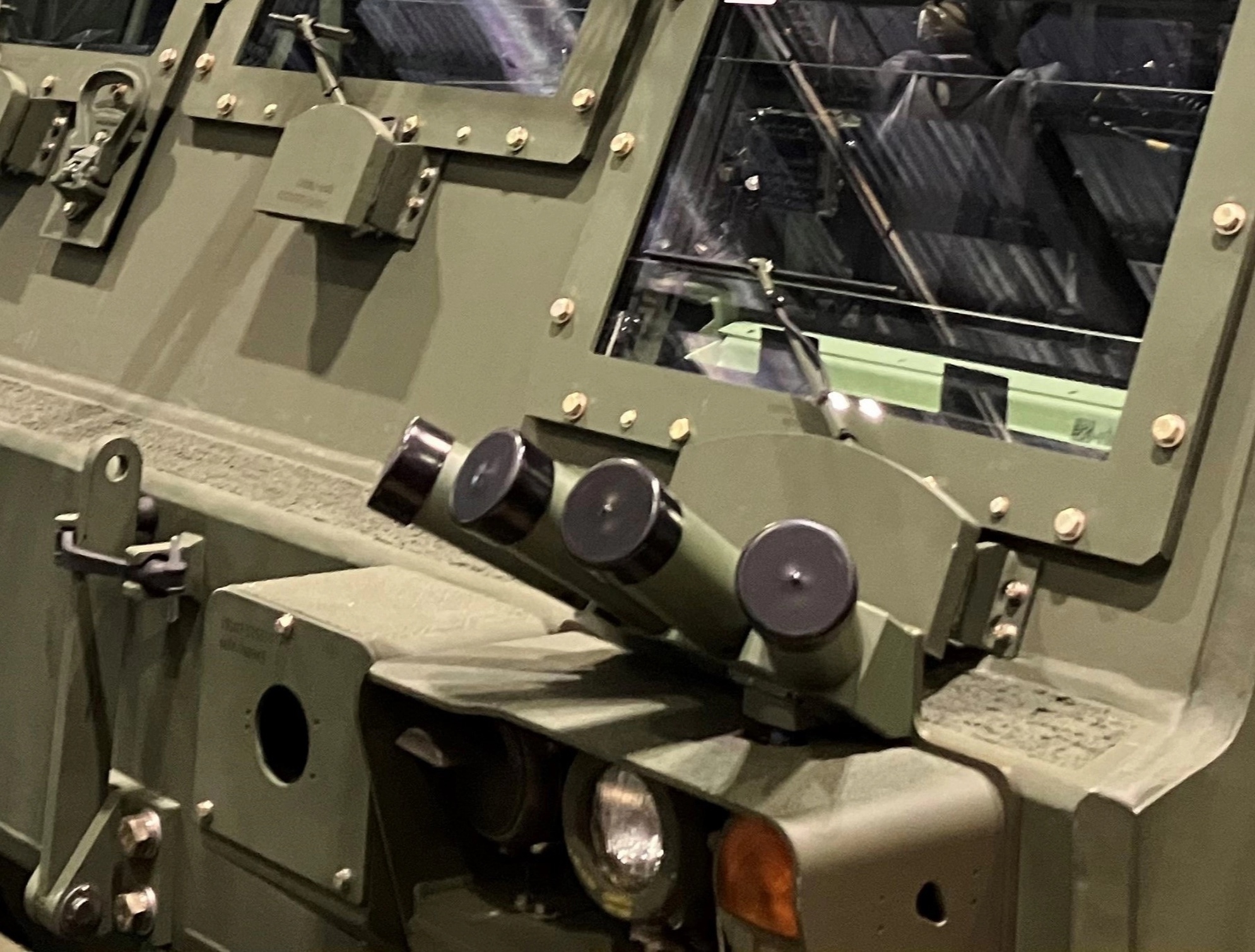IAV 2025: Fering presents Pioneer X
Fering Technologies, a British manufacturer of all-terrain hybrid vehicles has debuted its Pioneer X 4×4 multi-role extended range electric vehicle at the Defence IQ International Armoured Vehicles (IAV) exhibition held from the 21st – 23rd January in Farnborough, the UK.
The Pioneer X carries five core Fering technologies including the battery pack and chemistry, the suspension, the generator pack, the modular spine of the vehicle, and the chassis and powertrain system, as well as a fabric body system that is fitted to the civilian variants.
Arguably the most interesting feature of the Pioneer X is its claimed range of 7,000 km, which can be achieved through a multi-fuel or hydrogen generator. Its “self-sufficient power capabilities and unmatched range allow for deeper operational reach, reducing costs and logistical burdens,” Gareth Reece, Managing Director of Fering Technologies said in a company press release. As far as the reason for the vehicle’s release and design, the press release adds that it has been designed in cooperation with special forces units from around the world, which is indicative of its target market.
It is powered by a 60 kW multi-fuel generator and carries four batteries, which provide up to 80 km of silent driving using the electric motors and the vehicle’s batteries alone. “The generator can run on any heavy fuel like diesel, even cooking oil!” Ben Scott-Geddes, the Fering CTO told Calibre at the IAV exhibition. The motors and battery are supported by the multi fuel generator that extends the vehicle’s range, and is fed by a 470 litre fuel tank. The generator also provides off-board power for other systems like UAVs, battle management systems, and radios. It can even be used to charge electric dirt bikes and other platforms carried by the vehicle.
“The generator is a package, including the internal combustion engine and its connected to an element like a dynamo on a bike,” Scott-Geddes said. “The architecture for a hydrogen generator is the same as a multi-fuel engine,” he added. The Pioneer X is driven by two electric motors, one for each axle generating a total of 600 Nm of torque. The electric motors provide 100% of the torque from the outset, rather than having to reach that figure over time as internal combustion engines. The battery chemistry is ‘Lithium Titanate Oxide’, which is commonly used in marine installations. There are four batteries fitted to the vehicle and they are recharged from the generator. “We have developed the batteries over the past few years to provide enough power density as well as a balanced life cycle,” Scott-Geddes explained.

The Pioneer X can ford to a depth of 1.5 m, essentially submerging most of the vehicle. Credit: Fering.
In terms of off-road mobility, the Pioneer X is provided with independent active suspension. “The ground clearance can be increased or decreased by 850 mm, and it runs two suspension systems, one that works more off-road, and the other more on-road,” Scott-Geddes said. Active suspension means that the vehicle’s off-road capabilities are enhanced as the wheels have more freedom to move. For instance, with a conventional joined axle, it is possible for both wheels to leave the ground simultaneously, causing a loss of traction. Independent suspension in the same scenario, however, will generally keep one wheel on the ground. The wheels can also move more freely and through more angles when traversing difficult terrain.
The overall design means that the Pioneer X can climb a 60% gradient, maintain traction on a 50 degree side slope, climb a 0.5 m step, and be submerged up to a depth of 1.5 m – essentially most of the vehicle’s height. The Fering website adds that the vehicle has a kerb weight of 1,650 kg with an additional payload capacity taking the gross vehicle weight up to 3,500 kg.
The design makes use of aluminium and carbon fibre to keep the weight low. It has a central spine with the fuel built into the centre. It is designed with a modular frame that allows it to be extended to a 6×6 or reconfigured to perform multiple roles. The 6×6 configuration adds 1,000 kg of additional payload, whilst adding just 250 kg to the vehicle kerb weight. Its weight also means that it can be deployed from an aircraft, and the initial civilian design could fit inside a shipping container, which would be an added bonus for the special forces oriented Pioneer X. The tyres are standard 22 inch truck tyres, which is a deliberate choice allowing the users to locate and source tyres wherever they are deployed.
“The vehicles are designed and built in Battersea, everything under one roof. We’re very proudly British,” Scott-Geddes closed by saying.
Calibre comment
Logistics in challenging terrain can be an immense challenge and moving fuel forward to an operating base can cost hundreds of Euros per gallon whilst also exposing elements of the logistics chain to risk. At times, as the French forces experienced in Mali, it is necessary for armed forces to operate at very long ranges from their support bases on extended patrols or combat missions. All of these scenarios require resilient vehicles, and, where possible, cost efficient and effective logistics chains. It is possible to see that the Pioneer X could find welcoming users seeking to address those challenges. For comparison, a Polaris MRZR D4, which is a similar vehicle in design and shape, has a range of 321 km travelling on a paved road at 48 km/h, when at its gross vehicle weight of 952 kg.

Sign Up for Updates!
Get insider news, tips, and updates. No spam, just the good stuff!





